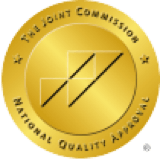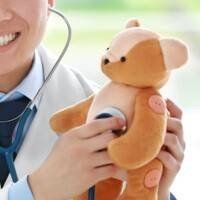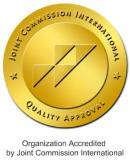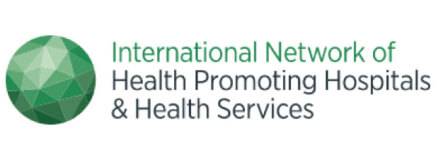Hand, Foot, and Mouth Disease (HFMD) is one of the common infectious diseases in Hong Kong, often causing outbreaks in residential care homes or kindergartens. According to the Centre for Health Protection, the peak season for HFMD in Hong Kong is from May to July, with smaller outbreaks possible from October to December. HFMD is caused by various types of enteroviruses, and there is no effective vaccine or specific treatment available. Therefore, both children and adults should pay special attention to hygiene to prevent infection.
How long is the incubation period for HFMD? What are the early symptoms? Below is an introduction to its common symptoms, incubation period, and treatment methods.
What is Hand, Foot, and Mouth Disease?
Hand, Foot, and Mouth Disease (HFMD), also known as vesicular stomatitis with exanthem, is a common infectious disease among children, particularly those under five years old. Patients may develop red rashes or blisters on the palms, soles, and inside the mouth. Symptoms are generally mild, and most cases recover naturally within a week.
Understanding the Transmission of Hand, Foot, and Mouth Disease
The primary mode of transmission for Hand, Foot, and Mouth Disease (HFMD) is through direct contact, including:
- Contact with an infected person's saliva, nasal mucus, sputum, or secretions from ruptured blisters
- Contact with an infected person's feces
- Contact with contaminated objects (such as toys, towels, utensils, etc.)
The virus is most contagious during the first week of illness, but it can continue to be shed in feces for several weeks. Therefore, maintaining good hygiene even after recovery is essential to prevent further spread.
What is the incubation period of hand, foot, and mouth disease?
The incubation period is about 3 to 6 days.
Causes of Hand, Foot, and Mouth Disease
The common pathogens of Hand, Foot, and Mouth Disease (HFMD) are enteroviruses, such as Coxsackievirus A16 and Enterovirus 71 (EV71). Infection can also occur through contact with contaminated sources. Cases caused by Enterovirus 71 require special attention, as they are more likely to lead to severe complications, including viral meningitis, encephalitis, and even polio-like paralysis. In extreme cases, the disease can be fatal, so it should never be taken lightly.
Risk Factors for Hand, Foot, and Mouth Disease
Although Hand, Foot, and Mouth Disease (HFMD) is more common among young children, adults can also be at risk, especially those in close contact with children. The following groups have a higher risk of infection and should remain vigilant:
- Children under five years old, particularly those in daycare centers or preschool environments.
- Individuals who have been exposed to an infected person's secretions or have shared personal items.
- People with weakened immune systems, including the elderly and those with chronic illnesses.
- Adults living with young children, such as caregivers or those responsible for household cleaning.
Symptoms of Hand, Foot and Mouth Disease
Most patients with hand, foot, and mouth disease experience mild symptoms and typically recover within 7 to 10 days. Initial symptoms include:
- Fever
- Loss of appetite
- Fatigue
- Sore throat
One to two days after the onset of fever, painful sores may appear in the mouth, starting as small red spots or blisters that later form ulcers, commonly found on the tongue, gums, and inner cheeks. Additionally, a non-itchy rash, sometimes with small blisters, may appear on the palms, soles, and occasionally the buttocks or genital area. Some patients may show no obvious symptoms or only experience mild symptoms such as a rash or mouth ulcers.
Diagnosis of Hand, Foot, and Mouth Disease
The diagnosis of Hand, Foot, and Mouth Disease (HFMD) is primarily based on clinical symptoms, particularly the characteristic red rashes and blisters on the hands, feet, and inside the mouth. Special laboratory tests are generally not required. However, if symptoms are unclear or if Enterovirus 71 (EV71) infection is suspected, doctors may collect throat secretions, stool, or blister samples for viral testing to determine the virus type and assess the risk of complications.
Treatment Methods for Hand, Foot, and Mouth Disease
In most cases, Hand, Foot, and Mouth Disease (HFMD) is mild, requiring only fever-reducing and pain-relieving medications. Children typically recover within a week. However, a small number of patients may develop severe complications such as encephalitis, myocarditis, acute limb paralysis, or meningitis, which can be life-threatening.
Preventing Hand, Foot and Mouth Disease
There is currently no vaccine to effectively prevent hand, foot, and mouth disease. Maintaining good personal hygiene is key to preventing infection. Here are effective prevention measures:
- Keep hands clean: Thoroughly wash hands, especially before and after touching the mouth, nose, or eyes; before eating or handling food; after contact with blisters; and after using the restroom:
- Wash hands with soap and water for at least 20 seconds, rinse thoroughly, and dry with a clean towel or paper towel.
- Alcohol-based hand sanitizers cannot effectively kill certain viruses associated with hand, foot, and mouth disease (e.g., enterovirus 71), so they should not replace soap and water.
- Practice respiratory hygiene: Cover your mouth and nose with a tissue when sneezing or coughing, dispose of used tissues in a covered trash bin, and thoroughly clean hands afterward.
- Safe dining habits: Use serving chopsticks and spoons during meals, and avoid sharing food or drinks with others.
- Avoid sharing personal items: Do not share towels or other personal items with others.
- Minimize close contact: Avoid close contact with patients, such as kissing or hugging.
- Health management: If feeling unwell, avoid going to work or school and consult a doctor promptly.
- Precautions for patients: Patients should avoid handling food or caring for children, the elderly, or individuals with weakened immune systems.
FAQ
Can Hand, Foot, and Mouth Disease Lead to Severe Consequences? Is Hospitalization Required?
Most cases of Hand, Foot, and Mouth Disease (HFMD) are mild, with symptoms resolving naturally within 7 to 10 days, and hospitalization is generally not required. However, if symptoms such as persistent high fever, lethargy, or seizures occur, immediate medical attention is necessary to prevent complications.
Can Adults Get Infected with Hand, Foot, and Mouth Disease?
Yes. Although hand, foot, and mouth disease is more common in children under five, adults can also get infected, especially parents or caregivers of infected young children. Symptoms in adults are usually milder, and some may even show no obvious signs, but they can still be contagious.
Can You Go to School or Work While Infected?
Patients should stay at home and rest to prevent spreading the virus to others. They must wait until all blisters have dried and scabbed over before returning to school or participating in group activities. If the infection is caused by Enterovirus 71, it is recommended to rest for an additional two weeks after recovery before going out.























